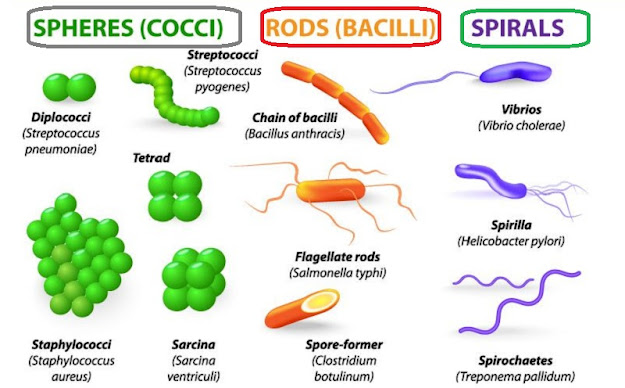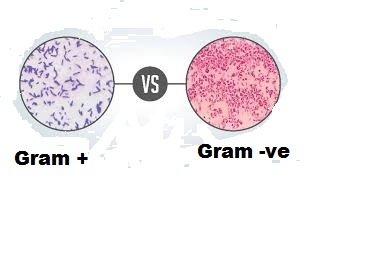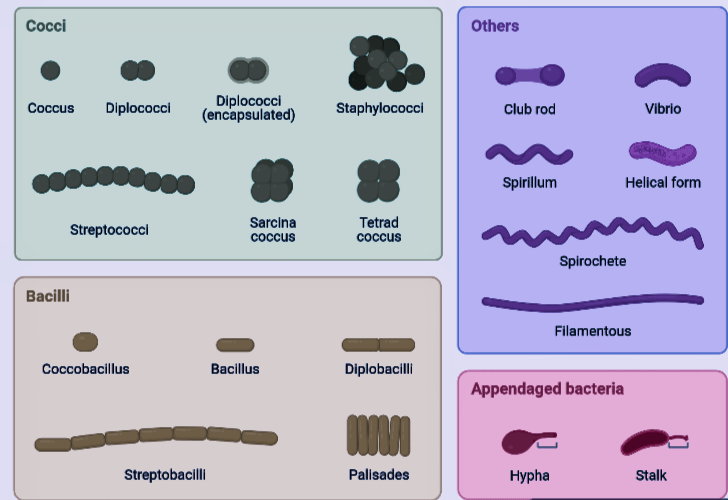Classification of bacteria in microbiology is much important. There are many kinds of bacteria on earth. Some of them beneficial for us but many of them are pathogenic.
It becomes difficult for the microbiologist to study them one by one.
Therefore, they decided to classify them on the basis of their types.
Therefore scientists classify them into different groups and subgroups on the basis of Gram stain, oxygen consumption while growing, and temperature requirements.
- Morphology
- Gram staining
- Oxygen consumption
- DNA
Morphological Classification of Bacteria
Morphology means “shape”. In this classification, we divide them by their shape.
They have morphologically four types.
- Cocci – they are round or ball-like shape “O”
- Vibrio – they are
- Bacilli
- Spirochetes
 |
| Classification of bacteria |
Classification of bacteria on the base of Gram Staining
There are two main groups on the base of Gram Staining,
- Gram-Positive. On gram staining, gram-positive bacteria attain a “Purple” color on slid.
Example: Staphylococci and streptococci, bacillus, listeria
- Gram-negative. Gram-negative bacteria stain “pink” color on gram staining.
Example: Neisseria, Hemophilus influenza, Brucella, Bordetella.

Bacteria classification on the basis of oxygen
On the basis of oxygen utilization, bacteria have four types.
- Strict Aerobes. They grow in the presence of Oxygen. Example Tuberculosis (TB)
- Anaerobe. they are further classified into two types.
- Strict anaerobe: they died in the presence of oxygen. example tetanus, fusobacterium.
- Facultative anaerobes: they can grow in both conditions, oxygen presence or absence of oxygen. example e.coli, staphylococci, streptococci.
- Carboxyphilic: They require 10% carbon dioxide for growth.
- Micro Aerophilic: They need only a small amount of oxygen for growth. More amount of oxygen results in the death of such bacteria. example Campylobacter, Helicobactor pylori.
Classification of cocci
Cocci bacteria are a morphological classified form of bacteria. They undergo further classification on the basis of gram staining.

1 thought on “Morphological classification of bacteria with examples”